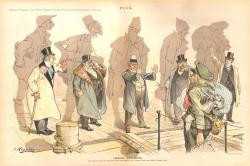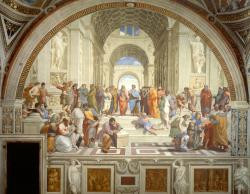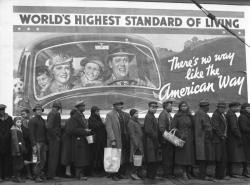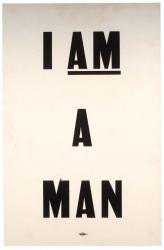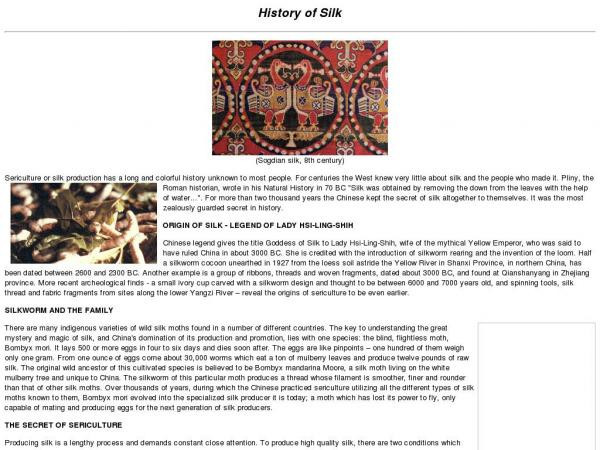Kate Harris
Social Studies teacher
Pittsburgh CAPA
Middle School (13 to 15 years old), High School (16 to 18 years old)
Teacher/Educator
Language Arts And English, Civics, Literature, Cultures, Economics, Social Studies, Geography, Writing, US History, Arts, Other
I'm a history-lover, art fan, and bookworm. I taught high school history (U.S. History and World Religions) for ten years in North Carolina, teach currently in Pittsburgh, PA, and am working to help teachers make the most of this new resource!
Kate Harris's collections
Investigating a Place: North Carolina
What defines a place? This teacher's guide uses stamps, photographs, paintings, objects, videos, and music to explore the history and culture of North Carolina. In the classroom, these resources can be used by students to investigate two essential questions: How do you define North Carolina as a place? What does it mean to be from North Carolina?
Further questions include:
How do these objects relate to each other? What objects/people/places are missing that you think are important in defining North Carolina as a place? What sub-themes can you identify within this collection of resources? How do you define North Carolina in terms of its environmental characteristics? What are its unique set of physical and cultural conditions? Has the definition of being from North Carolina changed over time?
Activity Idea:
Ask students to investigate collection in small groups to answer the two essential questions. Use the supporting questions to guide their inquiry into the essential questions - answering these questions will give students a knowledge and evidence base from which to answer the essential questions.
To further the activity, students may choose one resource to investigate in depth and either write an essay or create a collection of their own around it. Students may choose two or more resources to compare in their exploration of how one defines North Carolina.
Ask students individually or in small groups to create a collection in Learning Lab to represent the physical and cultural characteristics of another place. Using these collections, ask students to write summary statements describing the unique human and physical characteristics of places researched. In class discuss student collections and what makes each place unique.
 Kate Harris
Kate Harris
44
Immigration to America
This collection provides an overview of immigration to the United States, but emphasizes the increased immigration during the Gilded Age. Students can complete the collection independently, keeping in mind the following guided questions:
-Why have people been motivated to immigrate to the United States?
-What challenges have immigrants faced while traveling to or after arriving in the United States?
-What contributions have immigrants made to American society?
 Kate Harris
Kate Harris
20
Identifying Characteristics of Renaissance Art
This collection will teach you about how Renaissance artists changed the style and focus of art in the period between 1300 and 1600 CE. When you are done, you should be able to thoroughly answer the question: How did the art of the Renaissance reflect the new emphasis on humanism and science?
First, review the painting, Raphael's School of Athens, and learn about the new techniques used.
Then study the additional works in the collection and try to use them as examples of the different techniques. Some of the works are from the Renaissance period and others are more modern interpretations. A worksheet is included at the end of this collection to record your work.
Finally, test your knowledge with a quick quiz. Use your worksheet to help!
 Kate Harris
Kate Harris
11
How Siddhartha Became the Buddha
<p>This collection teaches students about the biography of Siddhartha Guatama and asks them to analyze images depicting stages of his life. Students will also learn about the different mudras, or hand gestures, that the Buddha makes. Quiz questions and hot spots are embedded throughout to check for understanding and support learning. </p><p>Tags: Siddhartha, Buddha, Buddhism, reincarnation, religion, India</p>
 Kate Harris
Kate Harris
12
How Radio Changed America
The technology for radio communications advanced during World War I, but it wasn't until the 1920s that commercial broadcasting grew and everyone wanted a radio for their home. Radio had a huge impact on creating a "mass media" that bound together the nation. As students explore this collection, they will look for evidence proving that radio changed America in four different areas:
-Politics
-Entertainment and Sports
-Religion
-Advertising
Possible assignments using this collection include:
1) Writing an essay evaluating the statement "Radio created a mass culture in America."
2) Researching a particular figure in radio's early history and sharing findings with classmates.
3) Creating a 1920s radio program that featured key people and trends from the decade. This could be recorded and shared in the form of a podcast.
4) Developing a chart comparing and contrasting the impact of radio with television or the internet.
 Kate Harris
Kate Harris
25
How did this happen? How do we keep it from happening again?
<p>My lesson is aimed at my AP Government class and will be divided into two parts. I will teach it towards the end of the year, as part of our unit on Civil Liberties. </p>
<p><strong>Part 1: How did this happen? </strong></p>
<p>What government actions led to the incarceration of Japanese-American citizens? What social conditions led to this? What connections do we see to today?</p>
<p>In this section, students will review the timeline of government actions that led to incarceration (including land acts, the ABC lists, the obfuscation of Exec Order 9066, and censorship of documentation/photography) and analyze images and press/propaganda that reflect existing social perceptions and anti-Asian sentiment. They will look for continuing patterns that emerged after 9/11 and more recently in response to the Covid-19 pandemic. </p>
<p><strong>Part 2: How do we keep it from happening again? </strong></p>
<p>How do people resist government power and policy? How do people shift from bystanders to allies?</p>
<p>In this section, students will visit stations to learn about different types and methods of resistance. These sections will include: Teachers/Librarians, Court Cases and Legal Advocates, Family to Family Help, and No-No Boys and the Heart Mountain Fair Play Committee. </p>
<p>At the end of this activity, students will work on a written reflection considering what they have learned from these examples of resistance.</p>
<p><em>This collection was made as part of a 2022 Landmarks of American
History and Culture workshop “Little Tokyo: How History Shapes a
Community Across Generations,” which has been made possible in part by a
major grant from the National Endowment for the Humanities: Democracy
demands wisdom. Any views, findings, conclusions, or recommendations
expressed in this collection do not necessarily represent those of the
National Endowment for the Humanities or the views of the workshop
presenters/ host institution. #NEHLittleTokyo2022</em></p>
 Kate Harris
Kate Harris
32
History of Mormons in America
<p>This collection of artifacts, photographs, texts, and historical markers is intended to help students explore the history of the Mormon religion in America. </p><p>Each of these items is intended to spark inquiry, following the process below: </p><ol><li>Students should choose one artifact on which to focus. </li><li>Have them use the artifact analysis PDF (last resource) to begin their study of the artifact. </li><li>Next, have students generate questions about the artifact? What do they wonder about? What does it tell them about the Mormon religion or its history within the United States? </li><li>Have students complete some general research on their artifact that will help their classmates piece together the story of the Mormon experience.</li></ol><p>As a collaborative project, students should use the PBS Forced Migrations map/timeline as a model for a class map/timeline of their own. </p><ol><li>Project an image of the map on a class whiteboard or create your own basic outline using large paper. </li><li>Have each student present their research findings. The main questions they should answer are: What does it represent about the Mormon experience? Where would the artifact they chose be placed (geographically and in terms of chronology)? </li><li>Students should then place place their image on the map with significant dates noted. </li><li>After all groups have presented, review the narrative of the Mormon experience with the class. What would they identify as critical moments in Mormon history? What questions do they still have?</li></ol><div>Tags: religion, Moroni, Joseph Smith, Brigham Young, Mormon, New York, Utah, Illinois, gold plates, inquiry</div>
 Kate Harris
Kate Harris
18
Hamilton!
<p>Have your students (or you) caught the Hamilton bug inspired by Lin-Manuel Miranda's musical? This collection is filled with resources and teaching ideas about the founding father. With his musical, Miranda has transformed teaching the Founding Fathers from distant and un-relatable to a relevant story of a hustling immigrant whose rise helps progress the American Revolution and set the new nation on track to become the economic powerhouse that it remains today.</p>
<p>Tags: Alexander Hamilton, ten dollar bill, Aaron Burr, duel, treasurer, financial plan, Federalist</p><p>#SmithsonianMusic<br /></p>
 Kate Harris
Kate Harris
14
Great Ideas, Modern Art, and Advertising
This collection consists of advertisements created for the Container Corporation of America in the 1950s. Each advertisement pairs a quote from a "Great Idea of Western Man" with a work of original art. After reviewing the collection, students will create their own art work to reflect a "Great Idea" that they think is important and meaningful in the world today.
 Kate Harris
Kate Harris
11
From Ancient India to a Studio Near You: Yoga's History
<p>This collection explores yoga's roots in ancient India and how its practice has changed as it has migrated to the West. There are questions embedded throughout the collection, which includes readings, images, links to outside websites, video, and a podcast. </p><p>Essential questions ask:</p><p>What are the roots of the practice of yoga? </p><p>Who claims to have invented it and what were the original goals?</p><p>How did it make its way to the western world and how has it changed through that process?</p><p>Tags: Hindu, Hinduism, India, religion, exercise</p>
 Kate Harris
Kate Harris
13
Frederick Douglass and "What to the Slave Is the Fourth of July?"
<p>In this collection, students will review the life of Frederick Douglass and learn about one of his most famous speeches, "The Meaning of Fourth of July for the Negro" (it is also commonly referred to as "What to the Slave is the Fourth of July). They will explore the strategies he uses to persuade and compare staged readings of the speech. Next, they will consider the central question posed by Douglass--how does the history of racial injustice in the United States affect our understanding of national symbols and what they mean? In addition, how do the diverse opinions of the many citizens of the United States present both challenges and opportunities for our nation? </p><p>Teachers may draw relevant connections to today and recent protests during the national anthem by professional, collegiate, and high school sports teams. </p>
 Kate Harris
Kate Harris
13
Fourth of July Celebrations
A topical collection inspired by the Fourth of July holiday. Have a picnic, see some fireworks, and enjoy our nation's independence!
 Kate Harris
Kate Harris
14

